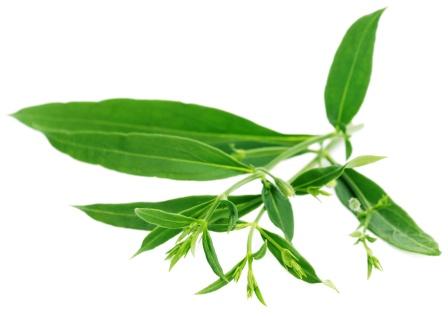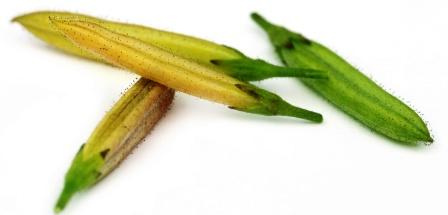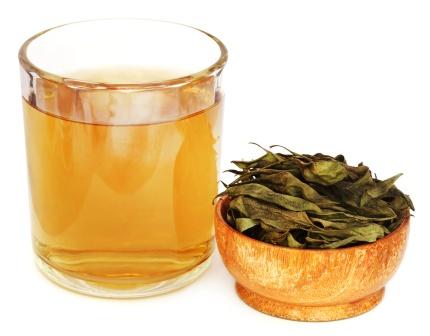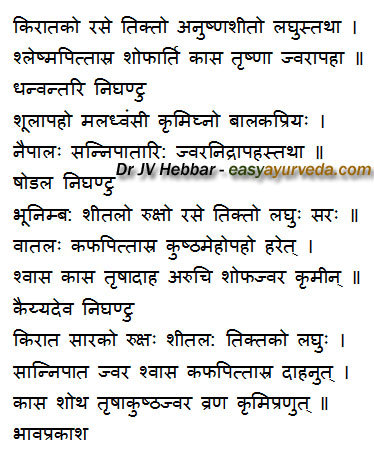Kiratatikta – Swertia chirata Benefits, Dose, Usage, Side Effects
Kiratatikta is a very famous Ayurveda herb used mainly in the treatment of infectious and inflammatory conditions like fever, skin diseases etc. The word meaning of Kiratatikta is – utterly bitter.
Swertia chirata is known as Chirayata or Kiratatikta in India. This annual herb is found all across India. Whole plant is usually used and its twigs and leaves are very rich in its active constituents.
Kirata tikta is a severe bitter herb appreciated well in the treatment of varieties of fevers, liver disorders and skin diseases. Kiratatikta and Bhoo nimba (Andrographis paniculata) are used mutually in the absence of one another due to similar nature and therapeutic actions.
Botanical Name-
Swertia chirata Buch Ham. (Swertia chirayita (Roxb .ex flem) Karst. Or Swertia tongluensis Burkill.
Family- Gentianaceae (Bhunimba kula)

Table of Contents
Vernacular names
Hindi name- Chriayata,
English name- Chitretta
Bengali name- Chirata, Chireta
Tamil name- Nilavembu
Punjab name- Charatin, Charaita
Marathi name- Kiraita
Gujarati name- Kariyatum
Kannada name- Nilabevu, Kiratatikta
Malayalam name- Nilavipaa, Nilaveppa
Telugu name – Nilavemu
Arabian name – Kasabujajareeraa
Farsi name – Nainihaabandi
This herb is mentioned in almost all the classical literature like Charaka Samhita, Sushruta Samhita, Ashtangahridayam, Ashtanga Sangraha, Chakradatta, Harita samhita, Bhavaprakasha, Sharangdhar Samhita, Bhaishajyaratnavali etc.
Differences between Kalamegha and Chirata
These two herbs are often used interchangeably. Kirata Tikta is a highly bitter herb, used in fever, cold, cough and Asthma. Mainly Kapha disorders.
Kalamegha is used in fever, liver, blood and skin complaints. Mainly Pitta disorders.
Varieties
Kiratatikta and Kalamegha (Andrographis paniculata) are usuallyconfused with each other and used interchangeably.
Raja Narahari Quoted two varieties viz, Kiratatikta and Naipala Nimba.

In Folklore medicine and in rural areas the Kalamegha is considered as Kirathathiktha and it is used in place of Kirathathiktha because of its similar morphology and properties.
Medicinal properties
Rasa (taste) – Tikta (bitter)
Guna (qualities) – Laghu (lightness), Rooksha (dryness)
Vipaka- Katu – undergoes pungent taste conversion after digestion
Virya- Sheeta – cold potency
Effect on Tridosha – Balances Kapha and Pitta.
Part used, Dosage
Whole Plant of Kiratha tikta is used for medicinal purposes. But the most potent part is the root of Kiratatikta.

Dosage- Powder 1-3 grams in a divided dose in a day.
water decoction / infusion – 50-100 ml in divided dose per day.

Therapeutic uses
The scientists have evaluated its potent hepatoprotective, leishmanicidal, anti cancerous, anti ulcer, CNS depressant, anti inflammatory, anti helminthic, antipyretic and anti microbial activities.
In Ayurveda it is used abundantly in the treatment of intermittent fever, asthma, skin diseases, chronic ulcers, sinus, fistula, liver disorders, worm infestation etc. According to Ayurveda it is a very good bitter tonic and is useful as a liver stimulant and appetizer.
Traditional Uses:
Pittasranut – useful in bleeding disorders such as heavy periods, nasal bleeding etc.
Shophahara – useful in inflammatory conditions
Kasahara – relieves cough, cold
Trushna -excessive thirst
Jvarahara – useful in fever
Maladhwamsi – decreases bulk of stool, useful in easing bowel movement
Krumighni – useful in intestinal worm infestation
Balakapriya – useful in pediatric complaints like recurrent fever
Sannipatari – useful in chronic and recurrent fever
Nidrapaha – reduces sleep
Mehopaha – useful in urinary tract disorders, diabetes
Shwasahara – useful in asthma and wheezing
Dahahara – useful to relieve burning sensation
Kushtahara – useful in skin diseases
Vranahara – induces quick wound healing. Its water decoction (kashayam) is used in washing wounds, to relieve infection.
It is widely used in the treatment of liver disorders
In Haritha samhitha it is used in the treatment of scorpion bites with other herbs.
Home remedies
By Dr MS Krishnamurthy MD(Ayu), PhD
Important simple remedies and their medicinal benefits of Kiratatikta are mentioned here below-
Eczema, itching
1. Kirat Tikt medicated oil in eczema and itching:
A fist full of the whole plant (approximately 50 gram) is taken and fine paste is made. This is cooked with 200 ml of sesame oil or coconut oil till it is free from moisture. Then it is filtered and stored. This oil is used to apply over the itching skin lesions especially in eczema. In dandruff and seborrheic dermatitis also it is effective.
Fever, cold
2. Kiratatikta – Ginger and Pepper decoction in recurrent fever and cold:
Equal amount of Kiratatikta- Ginger and Pepper are taken (3 gram each) and decoction is made by cooking with approximately 100 ml of water. This is administered in the dose of 20-30 ml three to four times a day. It pacifies recurrent fevers.
Read related: Easy Ayurveda Home Remedy For Fever And Cold
Anorexia, nausea
3. Fine powder with honey in anorexia and nausea:
2-3 grams of fine powder of Kiratatikta plant or leaves is taken and licked by mixing with honey. This helps to restore hunger and thirst. In nausea and vomiting also it is beneficial.
Pinworm, spasmodic pain
4. Fine paste in pinworms and spasmodic pain:
Fine paste of the fresh herb is very beneficial in intestinal worms especially in pin worms. In recurrent spasmodic pains and menstrual pain also it is found to be effective.
Skin diseases
5. Kiratatikta, neem and Triphala decoction in skin diseases:
The decoction prepared out of equal amounts of Kiratatikta, neem and Triphala is used both for internal and external purposes. Externally it is used to wash the wounds in case of chronic skin diseases and in ulcers. Internal administration is effective in Diabetes, itching skin diseases and even in several eye disorders.
Kiratatikta being a bitter herb has several health benefits. If this plant is included in our kitchen garden surely several health benefits can be obtained.
Click to consult Dr MS Krishnamurthy MD (Ayu), PhD
Sanskrit Synonyms
Katu Tikta, Kandatikta, Kirata, Bhunimba, Ramasenaka
Kirathathiktha: Kiratha Desho Iski Janm sthanam astha ithi !
The drug is originally from Kiratha Desh.
Kiratha, Kirathi, Rogana, Kirathmchasao thikthashethi va Kirathathiktha
It destroys diseases because of its bitter taste.
Bhunimb: Bhuva: Nimb: Iva:
It is a small neem plant or herb
Kandathiktha: Thiktha Kanda Aksya
The stem is bitter in taste
Katuthiktha:
Katukascha Asaw Thikthascha ithi katuthiktha
It is having tikta rasa and katu vipaka
It is used as a tea in a quantity of one tea-cup full twice a day. It is a tonic in a tonic dyspepsia and functional inactivity of the liver. Chiretta is much praised in India as a powerful tonic. It does not constipate the bowel but causes easy movement of bile.
Morphology
Habit – Perennial herb, with no robust stem, stem 2 – 4 ft. long has many branches, terete except near the top.
Leaves – Opposite, simple, broadly lanceolate, 10 cm long and 4 cm wide with acute apex.
Inflorescence – Terminal panicle inflorescence.
Flower-Greenish yellow with purple tinge, two glands on each lobe, fringed with long hairs.
Fruit- Capsule, ovoid and oblong, 2-valved with many seeds.
Seeds- Minute, compressed and often winged.
Useful part- Whole herb.
Side effects
Some people might not tolerate bitterness. In them, the decoction may induce vomiting.
It is safe to give birth to children and lactating mothers. But the dose needs to be monitored carefully.
It is best to seek medical advice for use in pregnancy.
It lowers blood sugar levels. Hence precaution is required while administering it in diabetic patients.
Interaction with medicines, supplements
Can this be used while taking Homeopathic medicine?
Yes. This product does not react with homeopathic medicine.
Can this medicine be continued while taking supplements like multivitamin tablets, Omega 3 fatty acids etc?
Yes. Generally, this product goes well with most dietary supplements. However, if you are taking more than one product per day, please consult your doctor for an opinion.
With western
medicines
Seek your
doctor’s advice if you are taking this product along with other western
(allopathic / modern) medicines. Some Ayurvedic herbs can interact with modern
medicine.
If both Ayurvedic and allopathic medicines are advised together, then it is
best to take Allopathic medicine first, wait for 30 minutes and then take the
Ayurvedic medicine.
Research
Blood sugar lowering activity
Analgesic and anti inflammatory actiivity
Ayurvedic medicines
Mahasudarsana kvatha, Sudarsana churna, Kiratatiktadi kvatha, Bhunimbadi kvatha, Tiktapancaka kvatha, Kiratadi taila, Tiktaka ghrita etc are the important formulations of Kiratatikta.
Classical categorization
Charaka-
Stanyasodhana – group of herbs used in cleansing breast milk
Trushna nigrahana – group of herbs useful in relieving thirst
Tikta Skandha – Bitter tasting group of herbs
Susruta- Aragvadhadi
Vagbhata- Aragvadhadi
Substitute
Sertia densifolia
Swertia ciliata
Swertia paniculata
Ayurvedic medicines with KirataTikta ingredient:
Kiratarishta – Used in fever and hematological conditions
Maha Manjisthadi Kashayam – Very famous Ayurveda medicine used in wide range of skin diseases
Panchatikta Kashayam – very potent antiviral and anti-bacterial medicine used in fever
Other medicines with Kirata Tikta as ingredient:
Sudarshan Choorna – Charaka Samhitha
Kirathadi Kwatha – Charaka Samhitha
Bhunimbadi Kwatha – Sushrutha
Thiktha Panchaka Kwatha- Charaka Samhitha
Kirathadi Thaila – Sushrutha Samhitha
Chandraprabha Vati – Bhaishajya Ratnavali
Sathyadi Kwatha – Sushrutha Samhitha
Pachabhadra Kwatha – Charaka Samhitha
Sarva Jwarahara Thaila – Chakradatta
Phalathrikadi Kwatha – Chakradatta
Classical medicine
Madhwasaava – Charaka Chi – 6
Thikthashadpalaka Gritha- Charaka Chi 7
DugalmBadi Gritha – Charaka Chi 8
Chandanadi Gritha – Charaka Chi 15
Mahathiktha Gritha – Yoga Rathnakar
Kashtakaryadi Kwatha – Yoga Rathnakar
Navanga Kashaya – Chakradatta
Kirathadi Kwatha – Chakradatta
Kirathadi Thaila – Chakradatta
Bahni Vati – Sharangadhara Samhitha
Chandraprabha Vati – Sharangadhara Samhitha
Sudarshan Choorna – Sharangadhara Samhitha
Maha Majjishttadi Kwatha- Sharangadhara Samhitha
Sudharshan Kwatha – Sharangadhara Samhitha
Chandanasava – Baishajya Rathnavali
Ushirasava – Baishajya Rathnavali
Kirathadi Choorna – Baishajya Rathnavali
Mahaneela Gritha – Sushrutha Samhitha
Distribution
It is found in temperate Himalayas between Kashmir and Bhutan at 1200 – 1500 meter altitude.
Major chemical constituents
Amarogentin, Gentipicrin, Isobellicifolin , Decussation, Chiratol, Sweachirin, 7-0 methylswertianin, Mangiferin, Swertianin, Swertinin, Chiraranin, Enicoflavine, Geneianine, Episwertenol, B – Sitosterol etc.
(Reference: Illustrated Dravyaguna VIjnana, Vol. II, by Dr JLN Shastry)
Chiratin is a chief bitter active constituent which are very bitter and amorphous glycosides.
Important phytochemicals of Kiratatikta are swertinin, swertianin, swerchirin, decussating, isobellidifolin, friedelin, methionine, threonine, tryptophan, aspartic acid, 9 tetraoxy genated xanthones, gentianine, gentiocrucine, eniflavine, arghinine, leucine, glutamic acid etc.
Systemic classification
Division – Angiosperm
Sub Division- Dicotyledon
Class – Gamopetallae
Sub Class – Bicarpellotai
Order – Gentionale
Family – Gentianaceae
Classical categorization
Gana or varga
In ancient Ayurveda treatise drugs have been grouped under either Gana or Varga. This grouping was based on the pharmacological properties as well as dietary use. Etymologically Varga or Gana will provide the forms meaning:
- Varga: is a group of a limited number of herbs having similar pharmacological properties.
- Gana: is a group of large numbers of herbs having similar pharmacological properties.
According to Charaka Kirathathiktha is included under
Tikta skanda
Sthanya Shodhana
Trishna Nigrahana
Sushrutha has mentioned it under – Argawadhadi Gana
Bhavaprakasha – Harithakyathi Varga
Dhanwanthari Nigantu – Guduchyadi Varga
Raja Nigantu – Prabhadradi Varga
Sthanika Karma (Systemic Action)
External Application – Decoction is used for wound cleansing.
Internal administration-
Nervous system – Sleep inducing and are indicated in Epilepsy, tremor etc.
Digestive system – Carminative, Ant helminthic, Amapachaka. facilitates movement of doshas in the proper direction. Indicated in Helminthiasis, Loss of appetite, Anorexia, Excessive thirst, Jaundice and other liver disorders, Constipation etc.
Circulatory System – Blood purifier. Indicated in edema, weak functioning of heart etc. conditions
Respiratory system – Pacifies kapha dosha. Indicated in cough and other respiratory disorders
Reproductive system –Purifies breast milk.
Tvak – Increases sweat production and is indicated in skin diseases.
Tapakrama – Indicated in fever and associated burning sensation (It can be given in both jirna jvara and vishama jvara)
Satmikarana – Indicated in post viral body weakness.











43 comments
tarun
What about Chandanasava sir ? I think that Swertia chirata is there in that too & what is the difference between two varieties viz, Kiratatikta and Naipala Nimba ?
Sir can chandanasava be used on daily basis after meals as a coolant as a lot of people are facing acidity & gas related problems for which I think that this might be the answer along with few other things.
tarun
Sir, you have mentioned Kiratatikta – Swertia chiraita in Chandanasava ingredients list on you blog of Chandanasava.
Under different varieties section on this blog itself you have mentioned Raja Narahari Quoted two varieties viz, Kiratatikta and Naipala Nimba. I just wanted to know the difference between these two.
Dr J V Hebbar MD(Ayu)Author
Sorry for the confusion. Chandanasava does contain swertia chirata. It is not a herb that you use on very regular basis. Just for the fact that you do not need high level cleansing daily. Hence Chandanasava can not be used for a very long time (more than 2 – 3 months time). It may cause constipation on very long term usage.
Naipala Nimba has not been identified / research on this herb is not carried out yet.
tarun
Thanks for quick reply sir.
Pranali
This is totally unrelated to this post but could you tell me the difference between cheriya bhringamalakadi tailam and valiya bringamalakadi tailam.. Both belong to the arya vaidya sala brand..
Dr J V Hebbar MD(Ayu)Author
Hi Pranali,
Cheriya means small. – it means this product – http://ayurmedinfo.com/2012/06/12/bhringamalakadi-taila-benefits-how-to-use-ingredients-side-effects/
Valiya means big, meaning it contains more number of ingredients but is similar to / little superior to Cheriya version. I will cover this Valiya Bhringamalakadi tailam details in future.
Pranali
Thank you for the quick reply doc..!!
Ishar Singh Narang
Very informative. I know this as Chairata kraita. But only this herb solely I feel is not useful. I am using famous SAFI of Hamdard wherein some sugar is added and I am not diabetic. I am happy u give all sort of names in english,persian,hindi etc. I am aware of this herb as blood cleansing.
Dr J V Hebbar MD(Ayu)Author
Thank you.
smita
Can we use it for psorasis. The skin on my palms peels of and small amount of blood oozes out.
Mak
What are the restrictions on food while one is taking Chirata?
Dr J V Hebbar MD(Ayu)Author
There are no herb-specific restrictions. The diet as per the disease to which it is being used to treat, is to be followed.
Arindam Mukherjee
Dear sir,
I want to know that regular eating of Chirata is harmful for kidneys. Please guide me
Dr J V Hebbar MD(Ayu)Author
Hi, regular consumption is not good. It is taken only based on disease, till the prescribed amount of time.
Akky
sir,
i was sufering from acne and so i adopted chirata every morning for 2 months..
all my acne got vanished and i got a glowing and fresh skin..
But along with this, it resulted in heavy weight loss..
im getting thiner and thinner and thinner..
i’m geting weak.
please help me what should i do next??
Dr J V Hebbar MD(Ayu)Author
Stop taking Chirata and follow these weight gain tips – https://www.easyayurveda.com/2009/09/29/healthy-tips-to-put-on-weight-to-become-fat/
Rubeena
Hi.Can you please tell me how to take chirata for acne ?
Dr J V Hebbar MD(Ayu)Author
It is a very good blood and skin detoxifying herb.
Its decoction – 1 teaspoon of powder, added to 1 cup of water, boiled and reduced to a quarter cup, filtered. Is consumed – after food for 2 weeks time. Precaution is required in diabetic people, as it can reduce blood sugar levels.
sagare an swamy
All members of our family had viral fever attack. Symptoms:fever,shivering,joint pain etc! Allopathic treatment including steroids, NSAIDS , antibiotics helped in the short ter.But the joint pain persists.I was advised Chirata Kashaya for 8-days.I have purchased the chirata herb roots and have started taking the decoction daily.Can you please confirm the that the treatment I am following is correct.
vivek roy
sir,i m taking chirata for last 3 days..to make my skin healthy and to loss some weight..i had heard from some person that this herb is very good and it work also in making skin healthy and lossing weight.is it correct????
Dr Malini Bhat
Dear Madam, Would advise you to take a expert opinion on the same as we are talking about Diabetes medicines here. And we all are genetically different some medications are suitable to us some are not. Hence, a expert opinion is needed. He/she might tell the treatment plan based on the reports.
Mary
I am 20 weeks pregnant & have consumed cherota with water for 3 consecutive days due to intestinal worms. Will it harm my pregnancy?
Dr J V Hebbar MD(Ayu)Author
No. But take care to avoid taking any herbs without consulting an Ayurveda doctor.
Dr J V Hebbar MD(Ayu)Author
Hi, if used just for 6-8 weeks of time, within the prescribed dose, it is not harmful for kidneys. Please consult an Ayurveda doctor if problems persist.
Dr J V Hebbar MD(Ayu)Author
He can take Chirata, but his blood sugar levels need to be checked at least once in 2 months.
Dr J V Hebbar MD(Ayu)Author
You can take it along with allopathic medicines. But check your blood sugar levels at least once in a month or two.
sandeep
Doc plz tell me that what quantity of take this harb
Dr J V Hebbar MD(Ayu)Author
Dose is – Fine powder – 1 – 2 grams 2 times a day, after food with honey.
Its Kashaya (herbal tea / decoction) – 20 ml, 2 times a day after food.
Dr J V Hebbar MD(Ayu)Author
1.Usually Chirata is boiled in water for 3- 5 minutes, filtered and consumed. It is beneficial for gastritis as well.
Niharika Deshmukh
Does it will help in weight reduction. Kindly help me.
Rodney
Dr I am having my medical to join the ship but my sgpt is very high so as my uric acid can take kalamegha strong how dose I should take pls reply
Anamika
Sir I have sneeze allergy and nasal polyp issue will it help to reduce snneze?
Deepika
Does chitretta makes our skin dry????
Shubham
I have to take chirata for my skin but don’t know how much to consume and what will happen if take that but empty stomach..??
Jayaprakash
What is the difference between Kiratha kadi and Kalamegha
Dr J V Hebbar MD(Ayu)Author
Kirata kadi is Kirata tikta, the one explained above.
Kalamegha is Andrographis paniculata – explained here
https://www.easyayurveda.com/2017/03/08/kalamegha-bhunimba-andrographis-paniculata/
Sonia
I am taking it for 3 days after meal at night for my skin problem like acne but the problem us that it cause acidity in my stomach why so 🙁
Prath
Hi. I had the kashaya of these leaves for 3 days consecutively on empty stomach in the morning. The skin in the intimate areas started itching profusely and white spots appeared. What can be the cause?
Kumaran
Hello Doctor – Very good post. Thanks a lot for this. I have one question. Kindly answer Will Chirayata herb as a decoction help in detoxing liver and help in curing fatty liver condition?
Akshita Malhotra
Doctor does it cause delay in menstrual cycles
Dr J V Hebbar MD(Ayu)Author
Usually, not.
Jai bharat
How to treat corona with ayurveda in moderate cases
Dr J V Hebbar MD(Ayu)Author
Please read here
https://www.easyayurveda.com/2020/03/16/coronavirus-ayurveda-prevention-treatment/